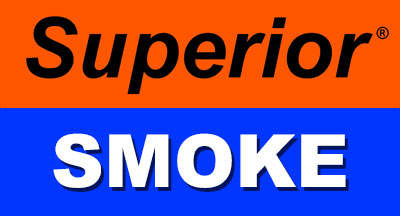Respirator Selection Guide
Types of Respirators
Respirators may be grouped into three major categories; air purifying, supplied air (or airline) and self-contained breathing apparatus (SCBA). These major categories are defined by how the respirators work to protect the wearer from airborne contaminates. These categories can also be used as a basic guide in understanding the level of protection provided by the respirator. Air purifying respirators provide lower levels of protection. If greater protection is required, a supplied air respirator may be used. An SCBA or a pressure demand airline respirator with an emergency escape bottle provide the highest level of protection. Instances when this protection factor is required include when an atmosphere is immediately dangerous to life or health (IDLH) or the contaminants and their concentrations are unknown. (An IDLH atmosphere is an atmosphere concentration of any toxic, corrosive or asphyxiant substance that possesses an immediate threat to life, would cause irreversible effects on health, or would interfere with the ability to escape from a dangerous atmosphere). The following are very brief descriptions of the three categories. These definitions should be used for general information only and do not replace the thorough understanding of respiratory protection required before selecting the appropriate respirator.
Air Purifying Respirators
These respirators are used only in environments that contain enough oxygen to sustain life (at least 19.5% oxygen). These units make use of special filters and cartridges that remove specific gases, vapors and particulates from the air. In order to be effective, the level of contaminants must be within the concentration limitations of that respirator. Also, the respirator chosen must be appropriate for the specific contaminant(s) of the environment in which it will be used. The useful life of these respirators depends upon the concentration of the contaminants, the breathing volume of the user, the capacity of the air-purifying filter medium, relative humidity and room ventilation. NIOSH/MSHA certified air-purifying respirators do not protect against all air contaminants in the various approval categories. Air-purifying respirators should be used for protection against only the types of contaminants listed on the filters and cartridges, and on the NIOSH/MSHA approval label which is affixed to each respirator carton and replacement filter/cartridge carton. Types of air-purifying respirators include: No maintenance, Low maintenance, Reusable, and Powered Air-Purifying Respirators.
Cartridges and Filters
Cartridges contain carbon which absorbs certain toxic vapors and gases. When the wearer detects any taste or smell that indicates the charcoal’s absorption capacity has been reached, this means the cartridge can no longer remove the contaminant. Filters remove particulates such as dusts, mists and metal fumes by trapping them within the filter material. Filters should be changed when it becomes difficult to breathe. Depending on the contaminants, cartridges can be used alone or in combination with a filter/pre-filter and filter cover. Cartridges are also available with a HEPA filter permanently attached.
Supplied Air Respirators
These respirators are used in toxic environments that are immediately dangerous to life and health (IDLH) as long as they’re equipped with an air cylinder for emergency escape. These respirators provide a supply of air, for extended periods of time, via a high pressure hose that is connected to an external source of air such as a compressor, compressed air cylinder, or portable breathing pump. Supplied Air Respirators offer a higher level of protection in atmospheres where air purifying respirators are not sufficient. Types of supplied air respirators are continuous flow and pressure demand.
Self Contained Breathing Apparatus (SCBA)
SCBA’s provide the highest level of respiratory protection available. They protect workers in oxygen deficient atmospheres (below 19.5% oxygen); in poorly ventilated or contained space areas, and in atmospheres that are immediately dangerous to life and health (IDLH). These respirators provide a supply of air (30 or 60 minutes in duration) from a compressed air cylinder worn on the user’s back. SCBA’s allow free movement making them particularly suitable for emergency response situations. Emergency Escape Breathing Apparatus are a smaller version of a SCBA cylinder to be used only for escape from hazardous environments as described above. These units generally provide a supply of air that is 5 or 10 minutes in duration.

